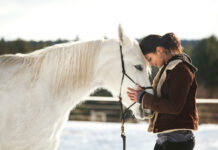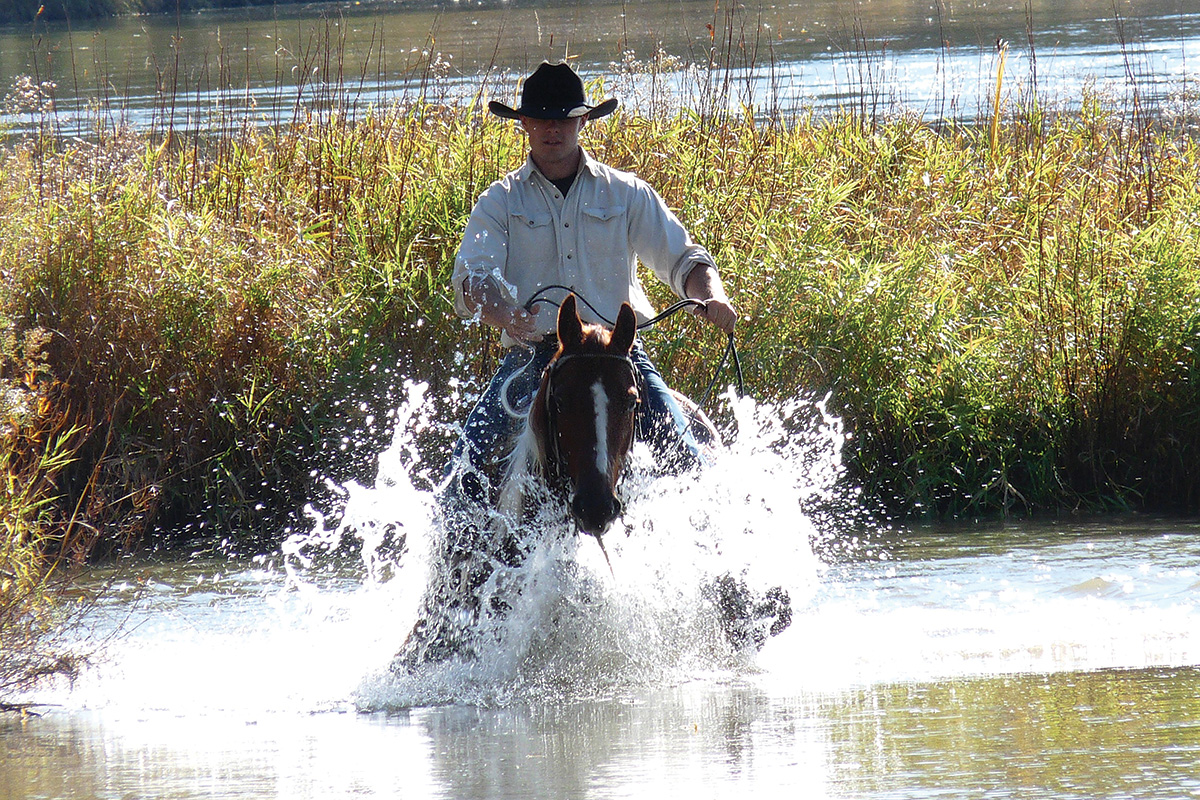
Crossing water is one of those things that’s either fun to do with your horse, or it’s exasperating—there doesn’t seem to be much middle ground. However, if a horse is trained to cross water willingly, it’s easy and very useful.
First Steps to Crossing Water
Ideally, you’ll want to start introducing your horse to water crossing by following a rider on a more experienced horse through the water the first few times. In some situations you won’t have another person to help you, however, so we’ll treat this as if you’re by yourself.
Start by riding your horse back and forth beside the water a few times. This lets him see the water, and turning back and forth also lets him know that you’re the one calling the shots. Occasionally when a horse gets near water, he will get nervous and stop listening to you. The more your horse does this, the more you should turn back and forth before attempting to cross the water.
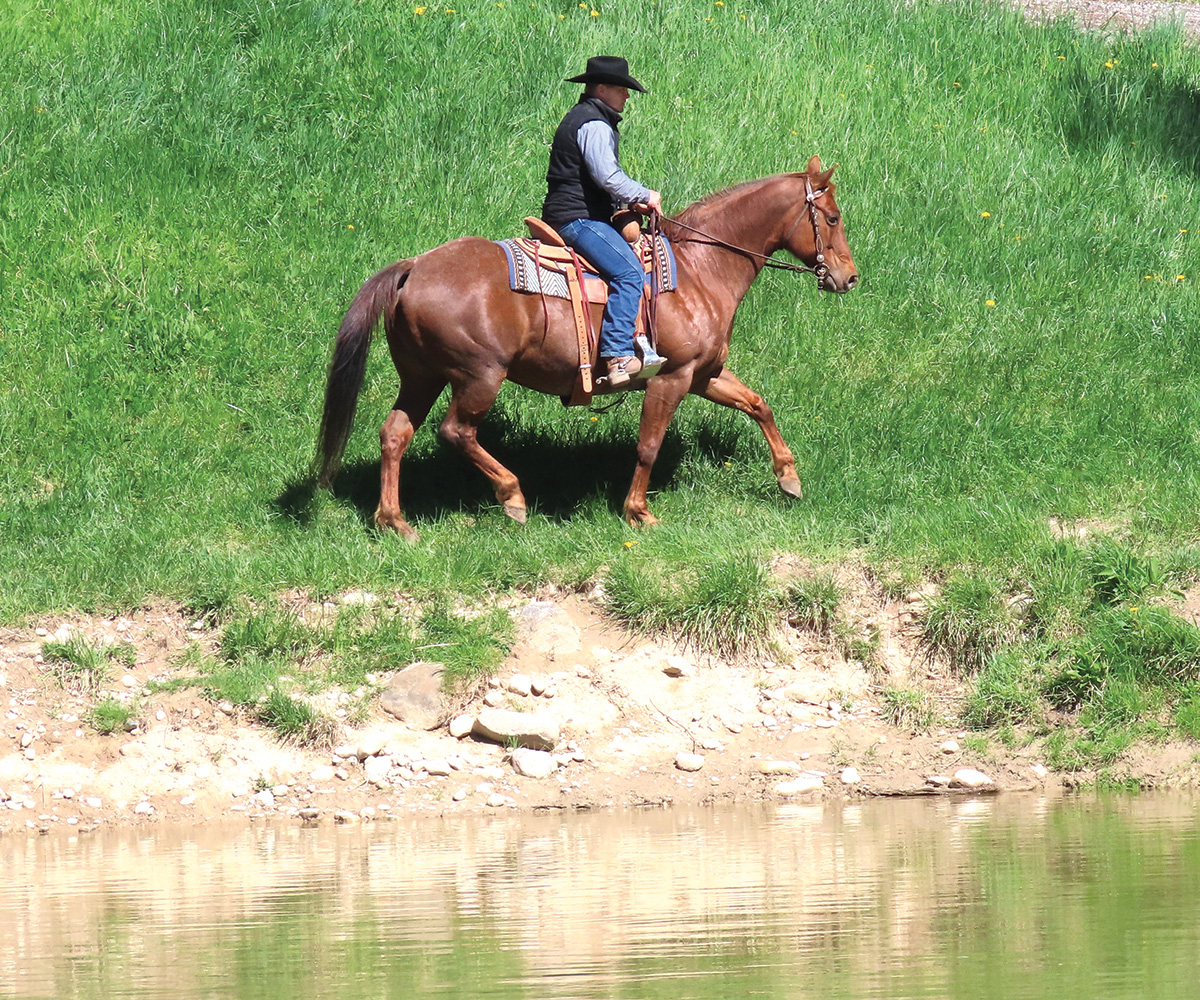
NOTE: When turning your horse back and forth, always turn toward the water. I never turn away, because if my horse is nervous, he might bolt away once he’s facing away from the water. Also, for the purpose of this exercise, I don’t want him thinking that turning away from the water is an option.
Approaching the Water
Once your horse is listening well, it’s time to approach the water. Pick the spot where you’re going to cross. You must be very specific here. Don’t attempt to just cross the water wherever—you want to cross at that one specific spot. If you’re too vague, your horse might take advantage of your indecision and go near the water but not through it.
It is now your job to keep your horse’s nose pointed at that spot no matter what he does. If he spooks, bolts, backs up, et cetera, you still need to keep his nose pointed at the spot you want to cross. If you can do that, eventually the rest of the horse is going to follow his nose. Approach the spot straight on; don’t come in on an angle, or it will be too easy for him to veer off to the side.
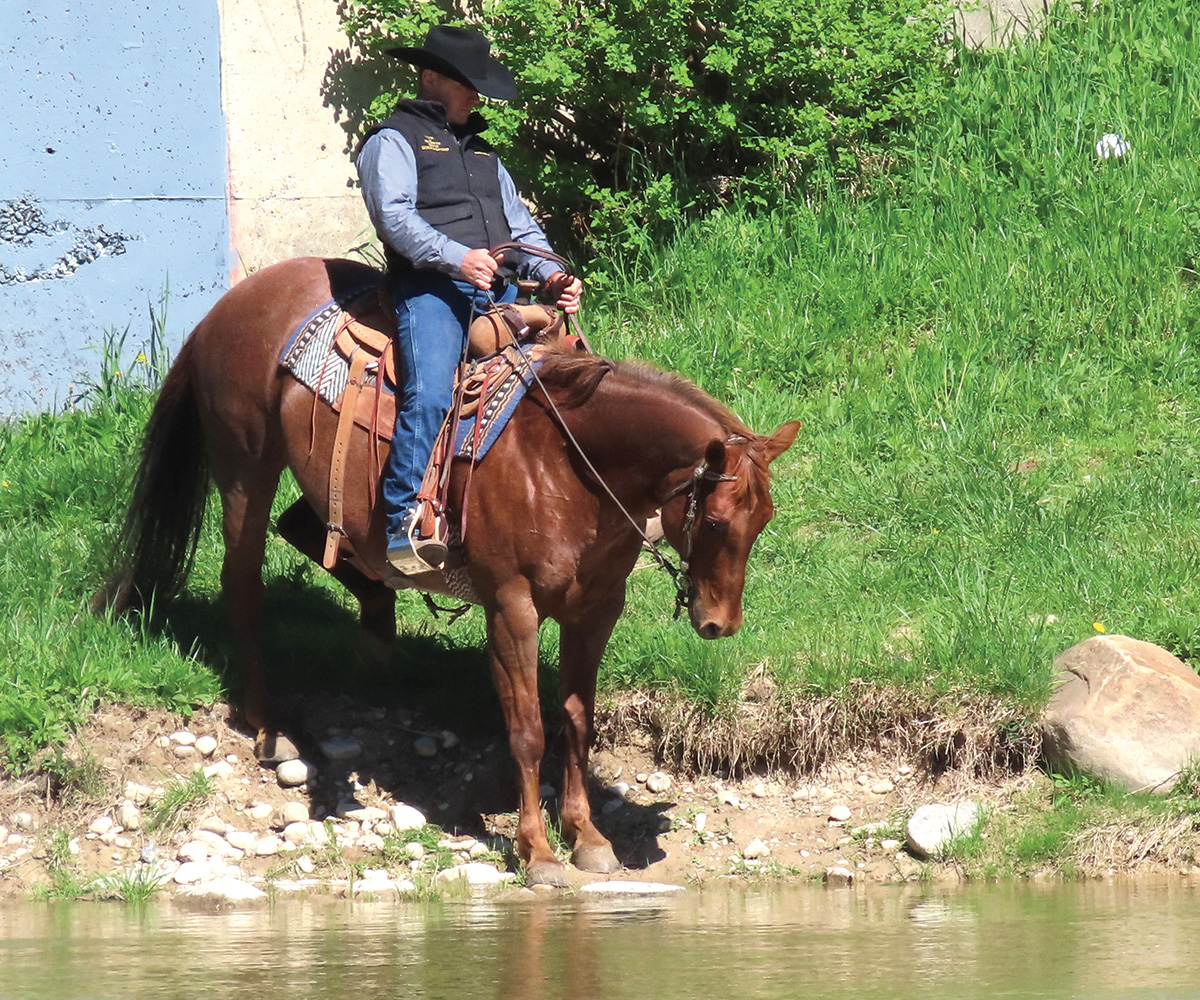
Walk your horse toward the water; chances are he will get close and then stop. When he stops, just sit there and let him look. Take all pressure off him and pet him if you can. If you let him stand for a minute, this will let your horse know that this spot is a good place to be.
This is important, because if your horse starts to really resist going into the water and you end up in an argument, it’s easy to find yourself farther away from the water than where you started. If you let him have this one rest spot, at least you will be able to get back to it and start over from there.
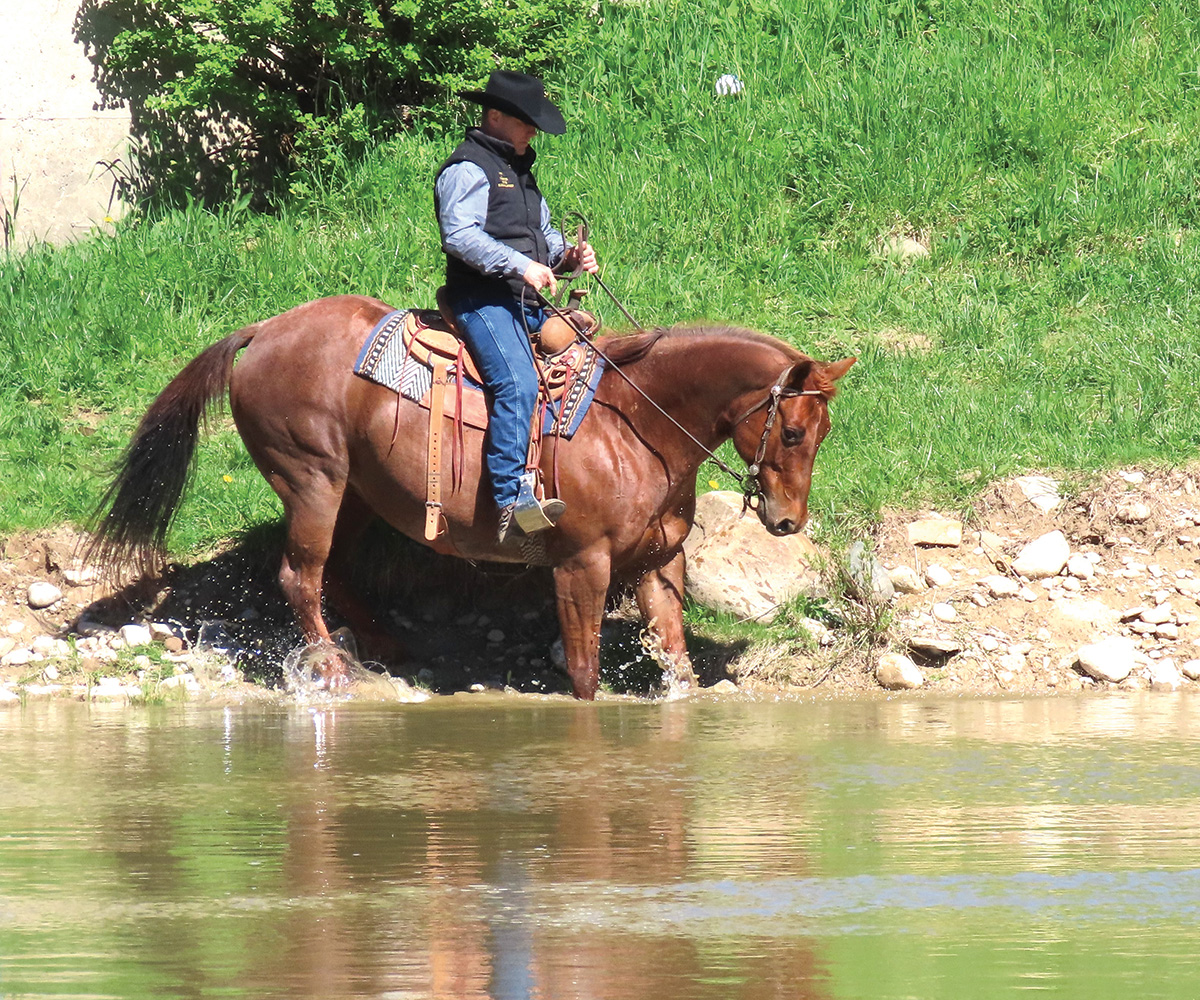
Now that he’s standing and looking at the water, chances are he will start moving again after a few moments. If he moves toward the water, allow him to go. If he tries to move to one side or the other, keep his nose pointed at the spot and then use your legs to keep him straight.
If your horse backs up, squeeze very lightly with your legs. Eventually he’s going to stop, and the moment he takes a step forward, release the leg pressure. If he takes 20 steps backward and only one step forward, I’m still happy.
Keep working at this. Most horses that don’t want to cross water will give three or four good attempts to get away by turning to the right and left and by backing up. If you stay with this and remain calm while keeping your horse’s nose pointed straight at your designated crossing spot, your horse is going to start to see that there is no escape.
Once he realizes this, usually he’ll take a few steps closer to the water. Be sure to let him stand and relax when he does this. The biggest mistake you can make is to start squeezing and kicking when your horse starts moving forward. He’s already doing the right thing by moving ahead, so don’t ask for too much.
Investigating the Water
Eventually your horse is going to get right up to the water. Chances are high that he’ll now start pawing at the water and put his nose down to investigate. Allow him do this, because even though he’s not crossing the water, he’s interested enough to be investigating it instead of running away from it.
It might take two minutes and it might take 20, but if you keep up with this, eventually he’s going to cross the water. How long it takes depends on how quickly he understands that moving forward is the only option.
Be aware that your horse might jump a narrow crossing, so you might have to grab the horn or some mane if that happens. When horses cross for the first time, some will cross at a snail’s pace. However, most will rush through once they get partway in. Just let your horse rush out and then walk some big circles once you reach the other side. Keep doing that until he is calm and relaxed.
Cementing Success in Crossing Water
Once your horse has settled, I recommend crossing back and forth several times. You’ve done the hardest part, so repeat it until your horse is doing it easily so you won’t have to start at square one another day.
Once you’ve crossed a few times, ask him to go through without letting him stop or put his head down to investigate and think about it. You now want him crossing the water as if he’s expected to, not like he has to decide whether it’s a good idea each time.
If you have a horse that keeps on jumping water instead of going through it, you there are a couple of things you can try. One is to keep crossing back and forth until your horse becomes a bit tired. At this point, most horses start to slow down and think about the crossing instead of overreacting.
Also Read: Teach Your Horse to Go Through Water on the Trail
If I have a horse that will not stop jumping the water, sometimes I’ll find a water crossing to practice that’s very wide, where the horse can’t reach the other side if he jumps. A shallow pond or a round pen after a heavy rain are good choices. Once the horse realizes he can’t jump to the other side, he’ll likely start going in properly.
Try to end your session on a calm note. If you repeat the water crossing lesson a few days in a row, you will likely have a horse that crosses water willingly for the rest of his life.
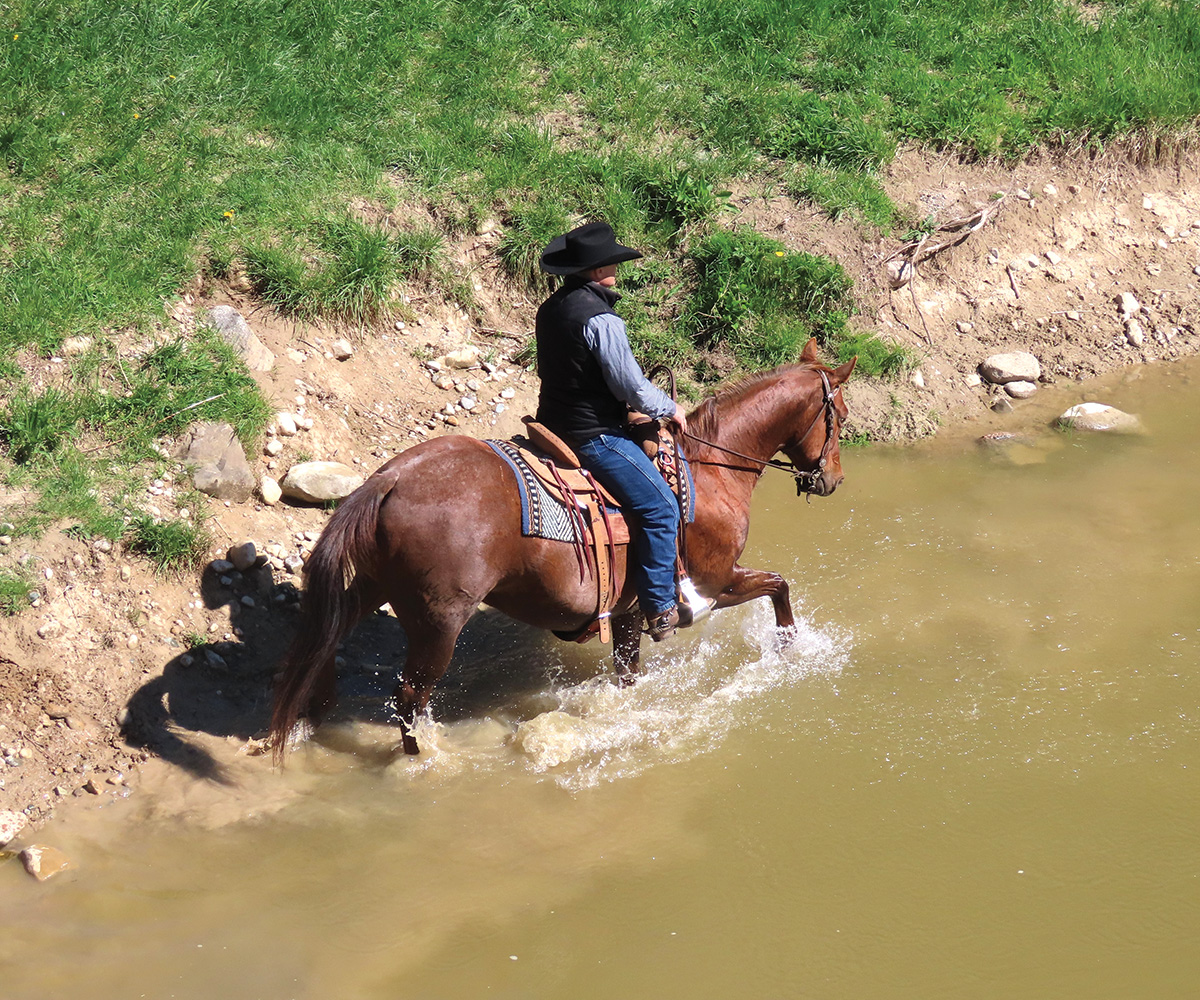
All the best to you and your horse!
This article about crossing water with your horse appeared in the August 2022 issue of Horse Illustrated magazine. Click here to subscribe!



